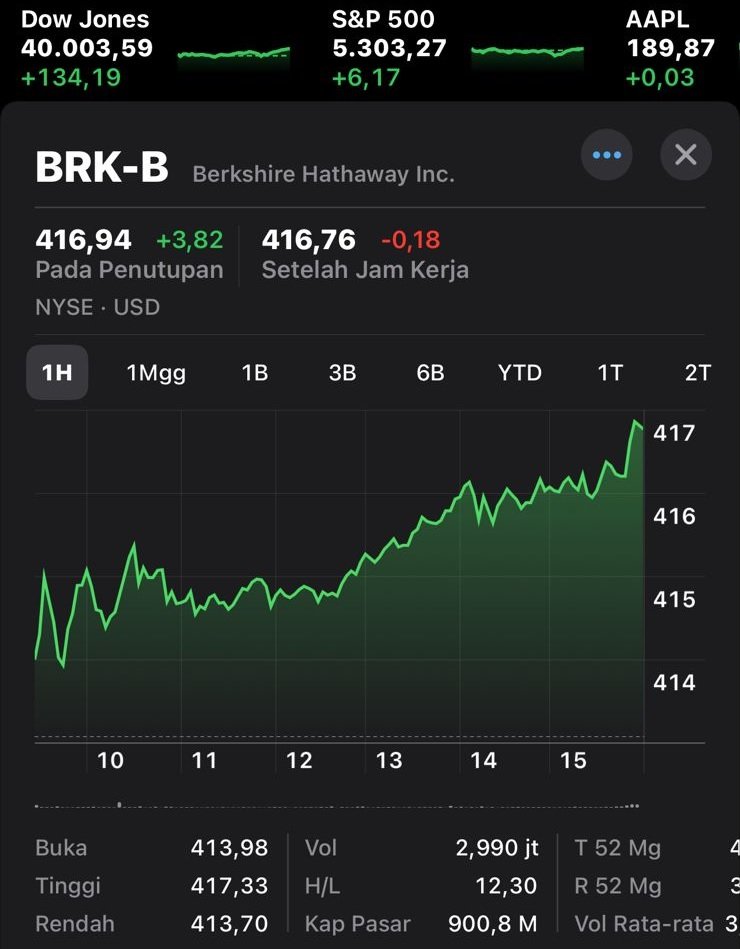Maybe you have heard of the term maturity date while reading articles about investments or loans. However, do you know what the meaning and function of this term is? If not, let’s look at the explanation
Understanding Maturity Date
Maturity date is the date on which a financial instrument, such as bonds, deposits or credit, expires and must be repaid or extended. On that date, the investor or borrower must repay the principal and interest owed, or receive back the invested capital and returns.
The maturity date can be found on the certificate or official document of the financial instrument. Maturity date also determines how long the investor or borrower will receive benefits from the financial instrument, such as interest or dividends.
Types of Maturity Date
Maturity date can be divided into several types, depending on the type and characteristics of the financial instrument in question. The following are some examples of maturity date types:
1. Maturity data for bonds:
Bonds are debt securities issued by the government or companies to obtain funds from the public. Bonds have a specific time period, called a tenor, which can range from a few months to a few years. At the end of the tenor, the bond will reach a maturity date, at which point the bond issuer must pay back the nominal value or principal value of the bond to the bond holder, along with the accumulated interest. Maturity date for bonds can be used to classify bonds into three main categories, namely short-term bonds (less than 1 year), medium-term bonds (1-10 years). and long-term bonds (more than 10 years).
2. Maturity date for deposits:
Deposits are term savings products offered by banks or other financial institutions. Deposits have a specific time period, called the deposit period, which ranges from a few months to a few years. At the end of the deposit period, the deposit will reach its maturity date, at which point the customer can withdraw the funds deposited, along with the interest given by the bank. The maturity date for deposits can be used to choose deposit products that suit the customer’s needs and goals, as well as to avoid penalties if the customer wants to withdraw funds before the maturity date.
3. Maturity date for credit:
Credit is a loan product offered by banks or other financial institutions. Credit has a specific time period, called a tenor, which can range from a few months to a few years. At the end of the term, the credit will reach maturity date, where the borrower must pay off all installments, including principal and interest, owed to the bank. Maturity dates for credit can be used to plan financial management and the borrower’s budget, as well as to avoid late payments or default which could have a negative impact on the borrower’s creditability.
Types of Financial Investments with Maturity Date.
Some financial instruments have maturity dates, each of which offers unique advantages and considerations. The types of financial investments with maturity dates are:
Bond.
Bonds are debt securities issued by the central government, city government, or corporate organization. They, these bonds have a fixed interest rate and maturity date. Government bonds, corporate bonds, and municipal bonds are some examples of several forms of bonds. Bonds are a popular choice for oriented investors looking for stable income over a certain period.
Certificate of Deposit.
Certificates of deposit (which we also know as CDs) are term deposits offered by banks and credit unions. These CDs have a fixed interest rate with maturity dates ranging from a few months to several years. Certificates of deposit are considered a safe investment and are ideal for individuals who want to preserve their investment wealth while earning predictable profits.
Fixed Deposits.
This is a type of investment similar to CDs, fixed deposits offered by banks and financial institutions. Fixed deposits have a fixed interest rate and maturity date, providing a safe investment option with guaranteed returns. Fixed deposits are a popular choice for investors who avoid risk and prioritize the security of their investment capital.
Annuity.
Annuities are long-term investment contracts offered by insurance companies. Annuities provide a guaranteed income stream within a certain period of time or for life to investors who invest in them. Annuities can have different maturity dates, for example an immediate annuity starts payments immediately, while a deferred annuity starts payments in the future.
The Importance of Maturity Date
Maturity date is one of the factors that investors or borrowers must pay attention to when choosing or using financial instruments. Maturity date can affect several things, such as:
1. Risk:
Risk is the possibility of loss or uncertainty from an investment or loan. Risk can be influenced by the maturity date, because the longer the term of a financial instrument, the greater the risk faced. For example, long-term bonds carry higher risk than short-term bonds, because they are more susceptible to changes in interest rates, inflation, or market conditions. Likewise, long-term credit has a higher risk than short-term credit, because it is more likely to experience payment difficulties, a decrease in collateral value, or changes in bank policy.
2. Yield:
Yield is the profit or return obtained from an investment or loan. Yields can also be influenced by the maturity date, because the longer the term of a financial instrument, the greater the returns offered. For example, long-term bonds have higher returns than short-term bonds, because they offer greater compensation to attract investors willing to assume greater risk. Likewise, long-term credit has higher returns than short-term credit, because the interest is greater to cover the greater risk.
3. Liquidity:
Liquidity is the ability to convert an asset into cash quickly and easily. Liquidity can also be influenced by the maturity date, because the longer the term of a financial instrument, the lower the liquidity. For example, long-term bonds have lower liquidity than short-term bonds, because it is more difficult to sell them on the secondary market before the maturity date. Likewise, long-term credit has lower liquidity than short-term credit, because it is more difficult to pay it off before the maturity date.
Conclusion:
Maturity date is the date on which a financial instrument, such as bonds, deposits or credit, expires and must be repaid or extended. Maturity date can influence the risk, return and liquidity of the financial instrument, therefore, it is important for investors or borrowers to know and take into account the maturity date when choosing or using financial instruments.













